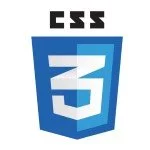CSS
15 CSS Shortcuts: Boost Your Workflow Today
Tired of writing endless lines of CSS? Discover a treasure trove of time-saving shortcuts that can dramatically improve your coding efficiency. From shorthand properties to clever selectors, these CSS hacks will streamline your workflow and help you build stunning designs faster. Get ready to level up your CSS game!
1. Shorthand Properties: Beyond the Basics
- Padding Shorthand:
padding: top right bottom left;orpadding: top-bottom right-left; - Font Shorthand:
font: font-style font-weight font-size/line-height font-family; - Border Shorthand:
border: width style color;
2. Flexbox Layout: Advanced Techniques
- Flex Wrap: Control how flex items wrap onto multiple lines.
- Order Property: Change the order of flex items.
- Align Self: Override the default alignment of individual flex items.
- Flex Grow, Shrink, and Basis: Fine-tune flex item sizing.
3. CSS Grid Layout: Complex Layouts
- Grid Template Areas: Name grid areas for easier positioning.
- Repeat Function: Create repeating grid tracks.
- Subgrid: Create nested grids within grid containers.
- Grid Auto-Flow: Automatically place items in the grid.
4. CSS Variables: Advanced Usage
- Cascading Variables: Inherit custom properties from parent elements.
- Calc() with Custom Properties: Perform calculations using custom properties.
- Environment Variables: Access environment-specific values (e.g., theme colors).
5. CSS Preprocessors: Practical Examples
- Nesting: Create hierarchical CSS structures.
- Mixins: Reusable code blocks for common styles.
- Functions: Create custom functions for calculations or color manipulation.
6. Relative Units: Responsive Typography
- Em and Rem Differences: Understand the relationship between em and rem units.
- Calculating Font Sizes: Use rem units for root-relative font sizes.
- Responsive Typography: Adjust font sizes based on viewport width.
7. CSS Calc() Function: Complex Calculations
- Combining Units: Calculate values with different units (e.g., px, em, %).
- Mathematical Operations: Perform basic arithmetic operations within calc().
8. CSS Pseudo-classes: Advanced Selectors
- State-Based Styling: Style elements based on user interactions (hover, active, focus).
- Structural Pseudo-classes: Target elements based on their position in the document (first-child, last-child, etc.).
- Dynamic Pseudo-classes: Style elements based on user actions (checked, disabled, etc.).
9. CSS Pseudo-elements: Creative Effects
- Generating Content: Create custom content before or after an element.
- Styling Generated Content: Apply styles to the generated content.
- Creating Custom Shapes: Combine pseudo-elements with borders and backgrounds for complex shapes.
10. CSS Animations: Keyframes and Timing Functions
- Keyframes: Define animation steps.
- Timing Functions: Control animation speed and easing.
- Animation Iteration Count and Direction: Repeat animations and control direction.
11. CSS Gradients: Multiple Stops and Angles
- Linear Gradients: Create gradients along a straight line.
- Radial Gradients: Create gradients from a central point.
- Conic Gradients: Create gradients around a central point.
12. CSS Box Model: Practical Applications
- Box Sizing: Control how width and height are calculated (content-box, border-box).
- Margin Collapse: Understand how adjacent margins behave.
- Padding and Border: Use padding and border effectively for spacing and styling.
13. CSS Reset: Customization
- Selective Resets: Target specific browser defaults.
- Custom Base Styles: Define your own baseline styles.
14. CSS Frameworks: Beyond the Basics
- Customization: Override default styles and create custom components.
- Responsive Design: Utilize framework’s responsive features.
- Performance Optimization: Optimize framework usage for performance.
15. CSS Minification: Tools and Optimization
- Balancing Minification and Readability: Consider readability when minifying.
- Minification Tools: Use online tools or build processes to minify CSS.
Conclusion
By mastering these CSS shortcuts and techniques, you’ll significantly streamline your development process, build more efficient and visually appealing websites, and elevate your CSS skills to new heights. Experiment with different approaches, stay updated on CSS trends, and continue to explore the vast possibilities this powerful language offers.


